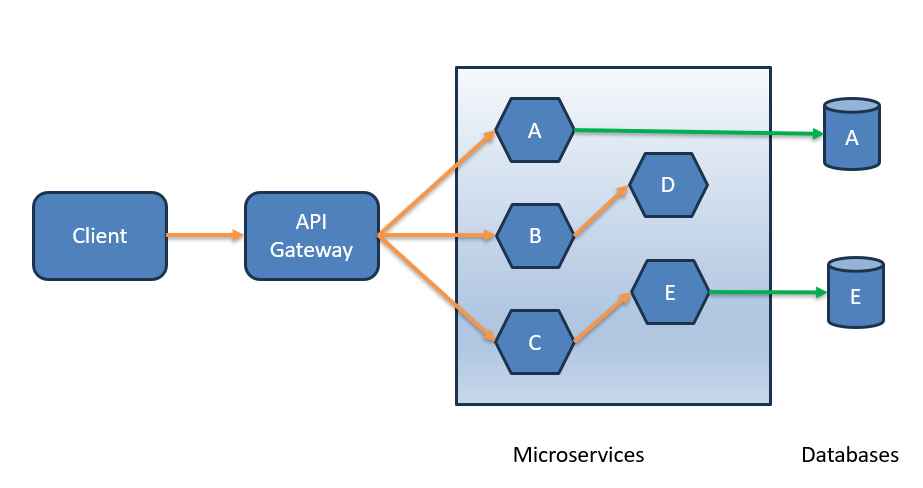Microservices architecture is a software development approach allowing breaking down of large complex applications into smaller and independent modules which are called a service. These services are designed in a way to be loosely coupled and can be deployed independently which allows flexibility in scalability and faster deployments. This approach also increases the resiliency of the system. In this article we are going to talk about Microservices design best practices which must be considered while designing.
Please check Introduction to Microservices Architecture for more information.
Below diagram showcases one sample microservices architecture. As can be seen, microservices could talk with each other and each microservices could have their own databases.

Microservices design best practices
Below are some of the key points that must be considered while designing any software application via microservices architecture.
Service Design
This is one of the most important aspects of this architecture approach. A proper service design must be done before moving into development stage to identify the independent, autonomous and scalable service. This must also include how each service interact with each other and the responsibility of each service must be finalized.
Service Discovery
This step basically talks about the way a service will identify other services and how the service will interact with each other and share the information across interfaces.
API Gateway
API gateway is an excellent way of defining independent interfaces as this acts as a single point of entry and exit for all the external communications. This gateway can also be designed to provide routing, load-balancing, authentication, and other features. API gateway must allow version support to ensure updating one module can be handled by other module by way of knowing versions and handling requests accordingly.
Containerization
Microservices architecture often uses container technologies such as docker, Kubernetes etc for packaging and deploying. This makes the service platform independent along with easier scaling and simplified deployments.
Continuous Integration
Microservices architecture allows implementation of automated processes to continuous build, testing and deployment mechanisms. Since, all these steps are automated which allows for faster development cycles to ensure frequent releases with higher quality.
Distributed Data Management
In this architecture approach, each service can have their own method of database management according to its needs. Thus, a proper plan should be there to handle the data consistency and data availability issue which can be a very challenging aspects in certain software applications.
Service Monitoring and Logging Subsystem
In order to monitor the health and software performance and availability, a centralized logging subsystem should be implemented which will allow to identify the issues efficiently resulting into a better software performance.
Security
Due to independent services architecture at times, this approach becomes highly susceptible to security attacks and thus every services must have to eliminate security vulnerabilities by taking necessary measures such as authentication, authorization and encryption methods to protect the sensitive data and eliminate unauthorized access.
Resiliency
It is very important to establish a resiliency strategy to ensure higher software resiliency. System must be designed to handle failures and auto recovery mechanisms such as replicating instances, requests timeouts and other fault tolerant strategies must be considered to ensure higher availability of the system.
Devops
There should be proper collaboration and communication between development and operations team to ensure better management of the system. To achieve this a proper technical practice must be introduced which must be followed religiously.
Conclusion
There are multiple ways to implement microservices and it should be chosen based on the business use-case but above points are fundamental practices that are applicable to all microservices and it should be considered while designing any system using microservices architecture.